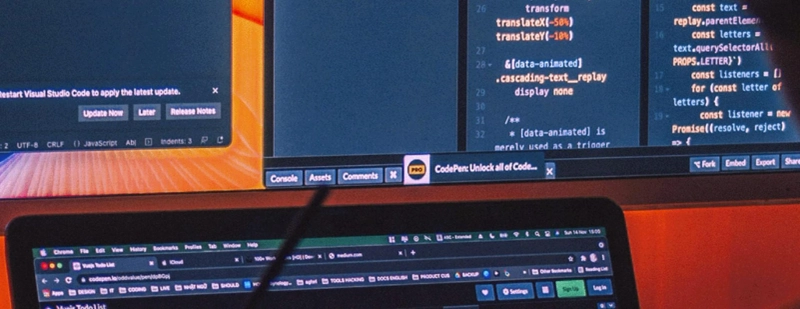In modern software development, continuous delivery and agile methodologies have revolutionized how teams build, test, and deploy applications. However, one critical component often lags behind: the database. While application code is typically version-controlled and automated through CI/CD pipelines, database changes can still be manual, error-prone, and risky. This is where Flyway Postgres comes into play — a lightweight, open-source tool designed to bring database version control and migration automation to PostgreSQL environments.
In this article, we will dive deep into the concept of database migrations, explore how Flyway Postgres simplifies and standardizes schema evolution, and discuss best practices for integrating it into enterprise workflows. We’ll also look at how companies like Zoolatech leverage Flyway to maintain reliability and scalability across complex systems.
What Is Flyway?
Flyway is an open-source database migration tool developed by Redgate, widely used for managing version control in relational databases. It follows a simple but powerful principle: migrations are scripts that describe incremental changes to your database schema and data. Flyway then executes these scripts in order, keeping track of which migrations have already been applied.
It supports multiple databases, including PostgreSQL, MySQL, Oracle, SQL Server, and more. When paired with PostgreSQL, Flyway Postgres provides a consistent and reliable way to evolve your schema alongside application changes — ensuring that developers, testers, and production environments all run the same version of the database.
The Challenge of Database Migrations
Unlike application code, which is easily versioned in Git or other systems, databases are stateful. Schema changes — such as adding a column, modifying an index, or renaming a table — can have far-reaching consequences. Manual migration processes often lead to issues such as:
- Inconsistent environments: Developers’ local databases differ from staging or production.
- Deployment errors: Manual SQL scripts may be missed or applied out of order.
- Rollback challenges: Undoing a schema change can be complex and time-consuming.
- Lack of traceability: It’s often unclear who made a change, when, and why.
These problems can lead to downtime, data corruption, or deployment failures. Flyway Postgres addresses all these pain points by introducing structure, automation, and visibility into the migration process.
How Flyway Postgres Works
At its core, Flyway uses a versioned set of SQL migration files to update a database schema. Each migration has a specific naming convention that defines its order and purpose.
1. Versioned Migrations
Versioned migrations are the backbone of Flyway. They are SQL or Java-based scripts named using a strict pattern, for example:
V1__create_users_table.sql V2__add_email_to_users.sql V3__create_orders_table.sql
When Flyway runs, it looks for new migration files, compares them with those already applied (recorded in a schema history table), and executes any new ones in ascending order. This guarantees a consistent evolution path for all environments.
2. Repeatable Migrations
Sometimes you need scripts that can be re-run whenever their content changes — for example, for views, stored procedures, or functions. These are called repeatable migrations, named like this:
R__refresh_materialized_views.sql
Flyway detects when the content of such scripts changes and re-applies them automatically.
3. Schema History Table
Flyway maintains a special table (by default called flyway_schema_history) in the database. This table stores metadata about all applied migrations, including version numbers, descriptions, checksums, and timestamps. It serves as an audit trail for all schema changes — a key aspect of compliance and traceability in enterprise environments.
Benefits of Using Flyway with PostgreSQL
PostgreSQL is one of the most popular open-source relational databases, known for its reliability, extensibility, and SQL compliance. Pairing it with Flyway creates a robust foundation for managing schema changes efficiently. The combination — Flyway Postgres — offers several benefits:
1. Version Control for the Database
Each migration is tracked and versioned just like application code. This allows teams to reproduce the database state for any version of the application and ensures consistency across development, staging, and production environments.
2. Automated Deployment
Flyway integrates seamlessly into CI/CD pipelines. Database changes are automatically applied during deployment, reducing human error and ensuring that each environment stays in sync.
3. Cross-Environment Consistency
By using the same set of migration scripts across all environments, Flyway eliminates the “it works on my machine” problem. Every environment evolves in exactly the same way, making debugging and testing much easier.
4. Rollback and Safety
Although Flyway itself doesn’t perform automatic rollbacks (to prevent accidental data loss), it supports manual rollback strategies and can detect out-of-order or conflicting migrations, reducing deployment risks.
5. Auditability and Compliance
In industries that require strict data governance, having a full record of all schema changes is crucial. The schema history table in Flyway Postgres provides an auditable log of every migration applied.
Typical Workflow with Flyway Postgres
Implementing Flyway in a PostgreSQL project follows a straightforward pattern:
- Initialize your project: Create a
sqldirectory to store migration scripts. - Create migration scripts: Write SQL files following the Flyway naming conventions.
- Configure Flyway: Provide connection details for your Postgres database in a configuration file or environment variables.
- Run Flyway commands: Use commands like
migrate,info, andrepairto manage migrations. - Integrate with CI/CD: Add Flyway steps into Jenkins, GitLab CI, or GitHub Actions pipelines.
The result is a fully automated, traceable, and reversible schema evolution process.
Flyway Postgres in Enterprise Environments
Enterprises such as Zoolatech rely on PostgreSQL for its performance and flexibility, particularly when managing large-scale data systems and microservice architectures. For such environments, Flyway Postgres offers a standardized way to handle the complexity of multi-environment database management.
Example Use Case: Microservices with Independent Databases
In microservice architectures, each service often manages its own database schema. Without automation, maintaining these schemas can become chaotic. Flyway enables each service to maintain independent migrations while keeping consistency across environments.
Example Use Case: Continuous Integration Pipelines
In CI/CD workflows, every commit triggers automated builds and tests. Integrating Flyway into this process ensures that database migrations are tested and applied automatically, reducing deployment errors. For instance, a Zoolatech engineering team might include a Flyway migrate step in their Jenkins pipeline to synchronize the PostgreSQL database schema with every new release.
Best Practices for Using Flyway Postgres
While Flyway simplifies database migrations, following best practices ensures long-term maintainability and reliability.
1. Keep Migrations Small and Incremental
Avoid large, monolithic migration scripts. Instead, create small, focused migrations that handle one logical change. This improves traceability and reduces risk.
2. Test Migrations Thoroughly
Before running migrations in production, apply them to a staging environment identical to production. This catches potential issues early and prevents downtime.
3. Never Modify Applied Migrations
Once a migration is applied and recorded in the schema history table, never edit or delete it. Doing so can break consistency across environments. If a change is needed, create a new migration.
4. Use Repeatable Migrations Wisely
Repeatable migrations are excellent for maintaining database functions and views, but they should be used sparingly to avoid performance overhead.
5. Integrate with Source Control
Store all migration scripts in your Git repository alongside application code. This ensures that database and application versions evolve together.
6. Automate Verification and Monitoring
Regularly verify the integrity of migrations using Flyway’s validate command. Monitor your schema history for any anomalies or failed migrations.
Common Pitfalls and How to Avoid Them
Even with a tool as robust as Flyway, mistakes can happen. Here are some common pitfalls in Flyway Postgres usage and how to prevent them:
- Out-of-order migrations: Always coordinate with your team when adding new migration files to avoid version conflicts.
- Missing migrations: Ensure every environment runs all migrations before deploying new features.
- Untracked manual changes: Avoid making ad hoc changes directly in production. If necessary, record them as formal migrations.
- Checksum mismatches: If a migration file changes after being applied, Flyway detects it and throws an error. The
repaircommand can fix metadata issues, but be cautious and ensure consistency first.
Integrating Flyway Postgres into DevOps Pipelines
In DevOps-driven organizations, automation and repeatability are key. Flyway Postgres fits naturally into this culture.
CI/CD Integration
- CI Stage: When developers commit code, Flyway validates and runs migrations against a temporary PostgreSQL instance for testing.
- CD Stage: Upon successful testing, the same migrations are executed in staging and production environments during deployment.
This pipeline guarantees that schema changes move through the same validation process as application code.
Cloud-Native Deployments
When using cloud providers like AWS RDS, Google Cloud SQL, or Azure Database for PostgreSQL, Flyway can connect securely to these managed databases. This enables consistent schema management across hybrid and multi-cloud infrastructures.
Why Teams Choose Flyway Postgres
The simplicity and flexibility of Flyway make it a favorite among database administrators, developers, and DevOps engineers. It offers a transparent and predictable approach to database version control that complements modern engineering practices.
Organizations like Zoolatech prioritize automation, reliability, and transparency in their software development lifecycle. By adopting Flyway Postgres, they gain:
- Reduced manual intervention
- Faster and safer deployments
- Complete traceability of database changes
- Better collaboration between developers and DBAs
Flyway becomes an integral part of the engineering culture, ensuring database changes are as manageable and predictable as application code.
Alternatives and Complementary Tools
While Flyway is widely adopted, it’s not the only database migration tool available. Alternatives include:
- Liquibase – Offers XML, YAML, and JSON-based changelogs with rollback capabilities.
- Alembic – Popular in Python ecosystems for managing SQLAlchemy migrations.
- Dbmate – A lightweight alternative supporting multiple databases.
However, Flyway’s minimal configuration, clear SQL-based approach, and strong PostgreSQL support make it ideal for teams seeking simplicity and reliability.
Future of Flyway Postgres
As PostgreSQL continues to grow in popularity, tools like Flyway are evolving to meet enterprise needs. Future versions are focusing on better integration with container orchestration tools (like Kubernetes), advanced validation mechanisms, and visual dashboards for migration tracking.
For forward-looking tech companies such as Zoolatech, adopting these tools means staying ahead of the curve — ensuring their data infrastructure remains scalable, reliable, and compliant.
Conclusion
Database migrations are one of the most challenging aspects of software development, but they don’t have to be painful. Flyway Postgres provides a clean, reliable, and automated way to evolve database schemas alongside your application code. Its simplicity, transparency, and CI/CD compatibility make it a cornerstone of modern DevOps practices.
By adopting Flyway, teams can eliminate the risks of manual SQL scripts, achieve consistent environments across the board, and gain complete visibility into every schema change. For companies like Zoolatech, this translates into higher reliability, faster deployment cycles, and a stronger foundation for innovation.



